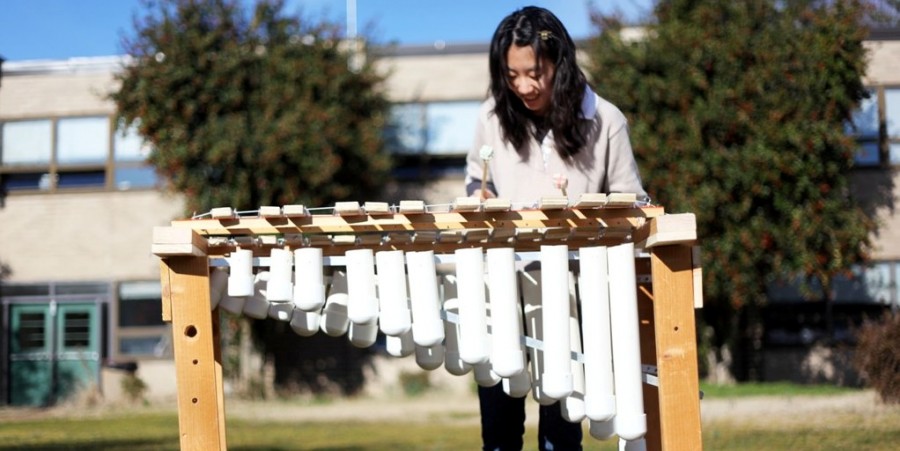It was 3 a.m., and I was sitting in the middle of approximately seven gallons of sawdust and at least thirty different sand papers, my whole basement virtually in chaos. Why? The Science Olympiad tournament was in three days.
When I first signed up for the Science Olympiad Team, I thought I had found a convenient alternative to Science Fair, which had made my freshman year miserable. Even when I heard that for Science Olympiad, my partner and I would each have to build our own instruments, I wasn’t worried and didn’t think it would be very much work.
Boy, was I mistaken.
I decided to make a marimba, a xylophone-like instrument. The first step for making a marimba is tuning the bars. On a school holiday, I spent three hours in the tech room at Langley, and ended up with 22 tuned bars out of the 27 I needed. Everything was right on track.
But then everything went wrong.
All bars were off by an octave. My C was a C, but it was an octave higher than the C it needed to be. I hadn’t realized this because my cheap little chromatic tuner only showed the note, not the octave.
So it was back to square one in tuning my marimba. I used a disc sander to thin the bars, thus changing the pitch. I had to hold the disc sander down on the bar and turn it on, then sit there and wait. After 10 minutes the bar would be down a note. After another 10 minutes, it would finally be close enough to the target note. Then I would test the bars, striking each with a rubber mallet about 50 times to test the pitch. It took a total of thirty minutes to an hour – for each bar.
After going through the tedious process of building a marimba, I learned a lot. I learned my way through the Langley technology room, became a master of power tools, and after tuning all 27 bars, came to realize the pitch of every random sound from everyday life. Langley bells are a high G sharp, by the way. And the fire alarm is between an A sharp and a B flat.
[nggallery id=119]
Photos by Rosie Brock


